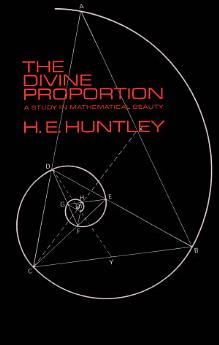The Divine Proportion
H. E. Huntley
জুন ২০১২ · Courier Corporation
৪.৫star
৪টি রিভিউreport
ই-বুক
208
পৃষ্ঠা
reportরেটিং ও রিভিউ যাচাই করা হয়নি আরও জানুন
এই ই-বুকের বিষয়ে
Using simple mathematical formulas, most as basic as Pythagoras's theorem and requiring only a very limited knowledge of mathematics, Professor Huntley explores the fascinating relationship between geometry and aesthetics. Poetry, patterns like Pascal's triangle, philosophy, psychology, music, and dozens of simple mathematical figures are enlisted to show that the "divine proportion" or "golden ratio" is a feature of geometry and analysis which awakes answering echoes in the human psyche. When we judge a work of art aesthetically satisfying, according to his formulation, we are making it conform to a pattern whose outline is laid down in simple geometrical figures; and it is the analysis of these figures which forms the core of Professor Huntley's book.
For the philosopher, scientist, poet, art historian, music listener, artist, as well as the general reader who wants to understand more about the fascinating properties of numbers, this is a beautifully written, exciting account of the search for a naturally manifested aesthetic that has occupied man since he first asked the question "why?"
"This is a delightful book to read. . . . It wanders here and there through some of the most attractive byways of simple mathematics, returning always to the oddities and pleasures of the golden section. This is a browser's book — a happy, untidy traveling or bedside book for those who know how to enjoy the charm of numbers and shapes." — Dr. J. Bronowski, The Salk Institute.
For the philosopher, scientist, poet, art historian, music listener, artist, as well as the general reader who wants to understand more about the fascinating properties of numbers, this is a beautifully written, exciting account of the search for a naturally manifested aesthetic that has occupied man since he first asked the question "why?"
"This is a delightful book to read. . . . It wanders here and there through some of the most attractive byways of simple mathematics, returning always to the oddities and pleasures of the golden section. This is a browser's book — a happy, untidy traveling or bedside book for those who know how to enjoy the charm of numbers and shapes." — Dr. J. Bronowski, The Salk Institute.
রেটিং ও পর্যালোচনাগুলি
৪.৫
৪টি রিভিউ
ই-বুকে রেটিং দিন
আপনার মতামত জানান।
পঠন তথ্য
স্মার্টফোন এবং ট্যাবলেট
Android এবং iPad/iPhone এর জন্য Google Play বই অ্যাপ ইনস্টল করুন। এটি আপনার অ্যাকাউন্টের সাথে অটোমেটিক সিঙ্ক হয় ও আপনি অনলাইন বা অফলাইন যাই থাকুন না কেন আপনাকে পড়তে দেয়।
ল্যাপটপ ও কম্পিউটার
Google Play থেকে কেনা অডিওবুক আপনি কম্পিউটারের ওয়েব ব্রাউজারে শুনতে পারেন।
eReader এবং অন্যান্য ডিভাইস
Kobo eReaders-এর মতো e-ink ডিভাইসে পড়তে, আপনাকে একটি ফাইল ডাউনলোড ও আপনার ডিভাইসে ট্রান্সফার করতে হবে। ব্যবহারকারীর উদ্দেশ্যে তৈরি সহায়তা কেন্দ্রতে দেওয়া নির্দেশাবলী অনুসরণ করে যেসব eReader-এ ফাইল পড়া যাবে সেখানে ট্রান্সফার করুন।




